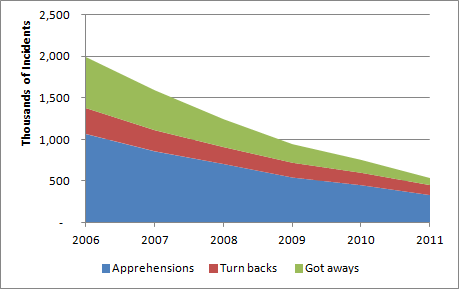Border Security By the Numbers
The Border Security, Economic Opportunity, and Immigration Modernization Act (S.744, or the Gang of Eight bill) establishes a 90 percent “effectiveness rate” as a goal for each of the nine separate sectors along the southern border. Originally, the bill only required this to be achieved in high-risk sectors, or one “in which more than 30,000 individuals were apprehended during the most recent fiscal year.” At Senate Judiciary Committee Markup, the
first amendment
Senator Grassley filed struck all references to high risk sectors. This amendment passed by voice vote, meaning these changes will be incorporated into the legislation as it moves to the Senate floor.
The bill defines the effectiveness rate as follows:
“The ‘effectiveness rate,’ in the case of a border sector, is the percentage calculated by dividing the number of apprehensions and turn backs in the sector during a fiscal year by the total number of illegal entries in the sector during such fiscal year.”
Typically, the Border Patrol only releases one component of this metric: the total number of apprehensions. This makes long-term effectiveness trends impossible to calculate, at least for the public. However, a 2012 GAO report contains all of the information needed to calculate the effectiveness rate for fiscal years 2006 through 2011.
Figure 1. Apprehensions, turn backs, and “got aways” for all southwest border sectors, FY 2006-2011

Read the full issue brief
Share
Read Next
Support Research Like This
With your support, BPC can continue to fund important research like this by combining the best ideas from both parties to promote health, security, and opportunity for all Americans.
Give Now